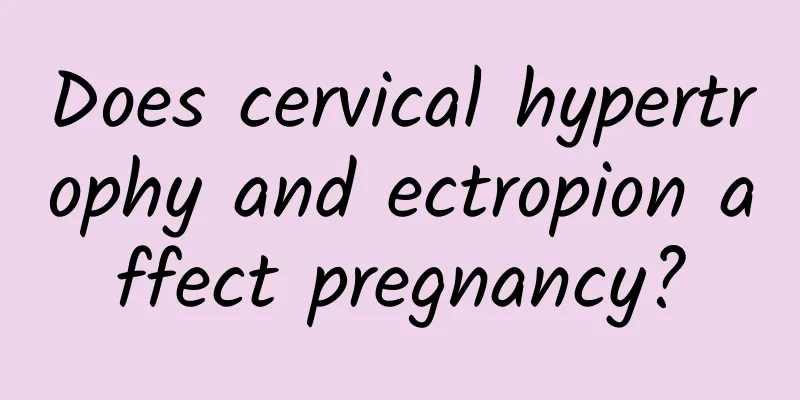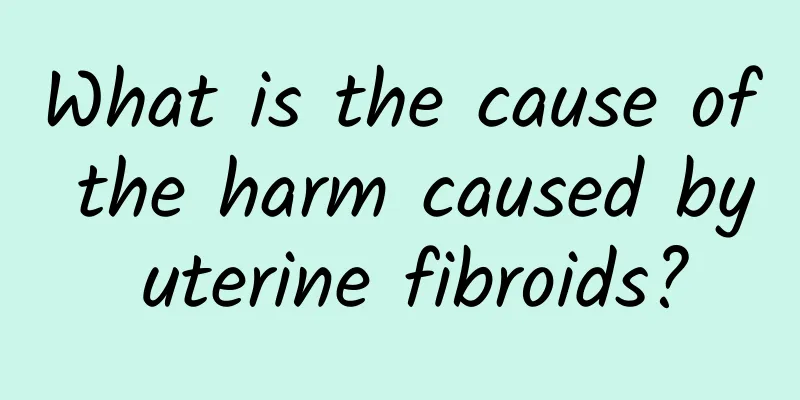Does cervical hypertrophy and ectropion affect pregnancy?

|
Cervical hypertrophy and ectropion may affect pregnancy, which is mainly related to factors such as cervical dysfunction, inflammation or infection. Treatment methods include drug therapy, surgical treatment and lifestyle adjustment, and the specific plan should be formulated according to the cause and symptoms. 1. Causes of cervical hypertrophy and ectropion Cervical hypertrophy and ectropion may be related to a variety of factors. Genetic factors may lead to abnormal cervical structure and increase the risk of ectropion. Environmental factors such as long-term exposure to chemicals or radiation may also have adverse effects on cervical health. Physiological factors such as hormone level fluctuations, especially high estrogen, may cause cervical hypertrophy. Trauma such as childbirth or surgical procedures may cause cervical injury and then ectropion. Pathological factors include chronic cervicitis, cervical polyps and other diseases, which may aggravate symptoms if not treated in time. 2. The impact of cervical hypertrophy and eversion on pregnancy Cervical hypertrophy and ectropion may affect the passage of sperm through the cervix into the uterus, reducing the chance of pregnancy. Ectropion may cause abnormal cervical mucus secretion, affecting sperm survival and movement. If accompanied by inflammation or infection, it may cause changes in the endometrial environment, which is not conducive to embryo implantation. In severe cases, abnormal cervical function may increase the risk of miscarriage or premature birth. 3. Treatment methods Drug treatment: For inflammation or infection, antibiotics such as azithromycin and cephalosporins can be used; progesterone or oral contraceptives can be used to regulate hormone levels; local treatments such as cervical suppositories or ointments can help relieve symptoms. Surgical treatment: For severe cases, transcervical resection, cryotherapy or laser treatment can be used to repair the cervical structure and improve function. Lifestyle adjustments: Maintain personal hygiene and avoid using irritating lotions; maintain a regular schedule and reduce stress; eat more foods rich in vitamins C and E, such as citrus fruits and nuts, to help enhance immunity. Cervical hypertrophy and ectropion require targeted treatment based on the specific cause and symptoms. Early intervention can effectively improve symptoms and increase the chance of pregnancy. If related symptoms occur, it is recommended to seek medical attention in a timely manner for professional evaluation and treatment. |
<<: What are the symptoms of functional uterine bleeding for those over 47 years old?
>>: What causes cervical erosion? Is it serious?
Recommend
Is Bingpengsan feasible for treating cervical erosion?
Patients with mild cervical erosion generally do ...
How do symptoms of vulvar itching manifest?
Vulvar itching and vulvar leukoplakia are the mos...
What's wrong with a small amount of coffee-colored blood?
What's wrong with a small amount of light bro...
Pregnant women have lower abdominal pain like dysmenorrhea
Lower abdominal pain usually refers to pain in th...
What are the symptoms of uterine fibroids? What are the diagnostic methods for uterine fibroids?
Symptoms Most uterine fibroids, even if they are ...
What are the dangers of untreated hyperprolactinemia?
Medically speaking, elevated prolactin levels in ...
What are the symptoms of miscarriage?
There are many different symptoms and types of mi...
Is Bulletproof Coffee Really Effective for Weight Loss? Weight loss doctor: Beware of ketoacidosis
The "Bulletproof Coffee Weight Loss Method&q...
What medicine can cure cervical erosion quickly and effectively?
What medicine can cure cervical erosion quickly a...
What are the early symptoms of uterine fibroids? Drug treatment methods for uterine fibroids
Uterine fibroids are a disease with a high incide...
47 years old, the menstrual flow lasts for ten days and is still heavy
47 years old, the menstrual flow lasts for ten da...
What are the clinical classifications of threatened abortion?
Pregnant mothers who are worried about threatened...
How to Treat Pelvic Inflammatory Disease Based on Syndrome Differentiation in Traditional Chinese Medicine
According to traditional Chinese medicine, pelvic...
3 things to pay attention to in daily life of elderly patients with vaginitis
Senile vaginitis generally refers to vaginitis th...
Tang Yan's 3 magic tricks to maintain her looks: aerobics is her favorite
Tang Yan, a mainland actress known as one of the ...









